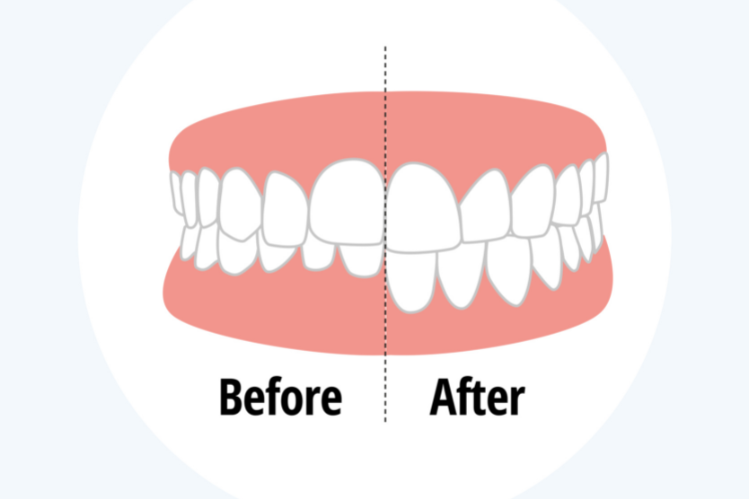
Orthodontic treatment has come a long way, and one of the most significant advancements has been the development of clear aligners. However, can clear aligners fix an overbite?
In this article, we will explore the answer to that question and provide you with all the information you need to make an informed decision about your orthodontic treatment.
What is an Overbite?
An overbite occurs when the lower teeth are excessively overlapped by the upper teeth. Severe overbites can cause a range of problems, including speech issues, difficulty in chewing, and jaw pain.
Clear aligners can fix overbites, but it is important to note that not all overbites are the same, and some may be more complex to treat than others.
How do Clear Aligners Work?
Clear aligners work by using a series of custom-made trays that gradually shift your teeth into the desired position. Each tray is slightly different, allowing for incremental adjustments. You will wear each tray for approximately ten days before moving on to the next tray in the series.
The length of treatment will vary depending on the severity of your overbite and other factors, such as the number of trays required.
Advantages of Clear Aligners
Clear aligners are virtually invisible, removable, and comfortable. They require fewer office visits than traditional braces. They are also made from a smooth, flexible material that is less likely to irritate your gums and cheeks than traditional braces. Additionally, clear aligners typically require fewer office visits than traditional braces, making them a convenient option for busy individuals.
Disadvantages of Clear Aligners
Clear aligners are not suitable for everyone. Severe overbites may require more aggressive treatment, such as traditional braces or surgery. They may also take longer to achieve the desired results than traditional braces. Additionally, clear aligners may be more expensive than traditional braces, depending on the length of treatment required. Finally, clear aligners require a high level of compliance. To achieve the desired results, you must wear your aligners for at least 22 hours per day.
Choosing the Right Treatment
If you are considering clear aligners to fix your overbite, it is important to speak with an orthodontist to determine if they are the right treatment for you. Your orthodontist will evaluate your overbite and other factors, such as your age and oral health, to determine the best course of treatment.
If clear aligners are not suitable for your overbite, your orthodontist may recommend traditional braces or surgery.
Clear Aligners for Mild to Moderate Overbites
Clear aligners are most effective at fixing mild to moderate overbites. They offer many advantages, including being virtually invisible, removable, and comfortable to wear. However, it is important to note that clear aligners require a high level of compliance.
To achieve the desired results, you must wear your aligners for at least 22 hours per day. Failure to do so may result in treatment taking longer than expected or not achieving the desired results.
Severe Overbites
Severe overbites may require more aggressive treatment, such as traditional braces or surgery. Traditional braces are still the most effective treatment to fix severe overbites. They can move teeth more quickly and can address more complex orthodontic issues.
Conclusion
In conclusion, clear aligners like SmilePath are an effective option for fixing mild to moderate overbites. They offer many advantages, including being virtually invisible, removable, and comfortable to wear. However, it is important to note that not all overbites are the same, and some may require more aggressive treatment, such as traditional braces or surgery.
Before choosing clear aligners or any other orthodontic treatment, it is essential to speak with an orthodontist. They can evaluate your overbite and other factors, such as your age and oral health, to determine the best course of treatment for you.
It is also important to note that clear aligners require a high level of compliance. To achieve the desired results, you must wear your aligners for at least 22 hours per day. Failure to do so may result in treatment taking longer than expected or not achieving the desired results.
If you are considering clear aligners to fix your overbite, it is essential to weigh the advantages and disadvantages carefully. While clear aligners offer many benefits, they may not be suitable for everyone or may require more extended treatment than traditional braces.
Ultimately, the goal of any orthodontic treatment is to improve your oral health and overall well-being. Whether you choose clear aligners or another treatment option, the most important thing is to work with your orthodontist to achieve the best possible outcome.
FAQs
An overbite is a dental condition where the upper teeth overlap the lower teeth. Clear aligners, such as Invisalign, can fix an overbite by gradually shifting the position of the teeth.
The length of treatment time for an overbite with clear aligners will depend on the severity of the overbite. Typically, treatment lasts from six months to two years.
In most cases, clear aligners alone can fix an overbite. However, if the overbite is severe, orthodontic surgery may be necessary to achieve the desired results.
Clear aligners can be effective for fixing an overbite in both children and adults. However, treatment may take longer in adults, as their teeth are more firmly set in their jawbone.
Clear aligners offer several benefits over traditional braces, including their nearly invisible appearance and the ability to remove them for eating and cleaning. Additionally, they are often more comfortable than braces, as they do not use brackets or wires to move the teeth.



 Australia
Australia New Zealand
New Zealand Malaysia
Malaysia English
English Portuguese
Portuguese English
English English
English English
English English
English English
English Canada
Canada